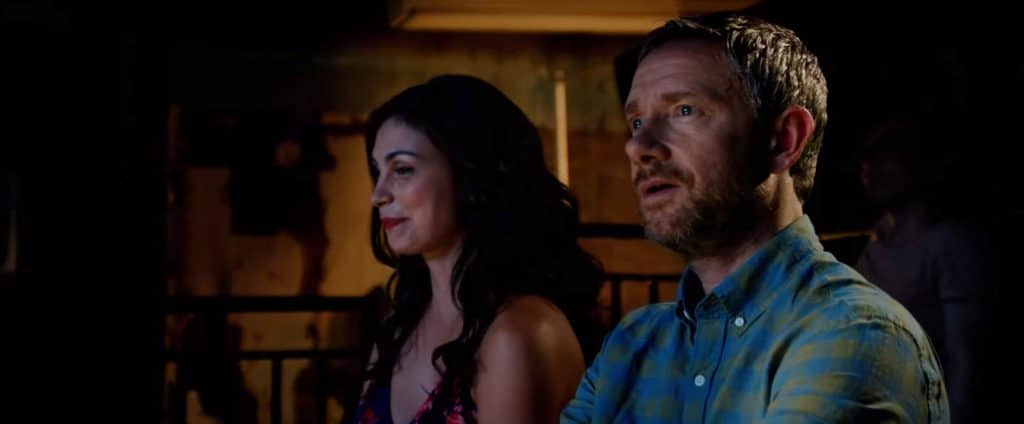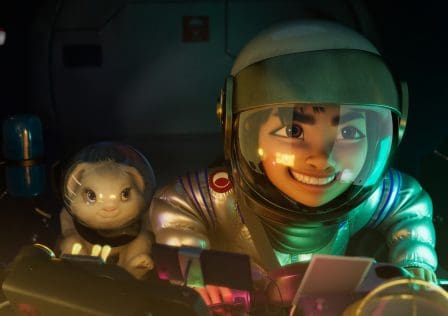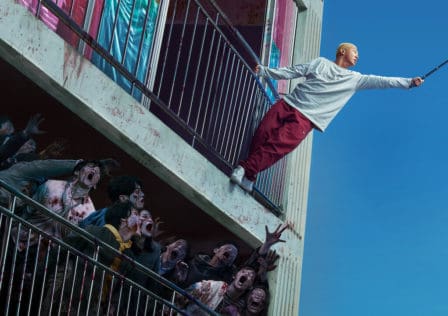Part of the joy of watching Ode to Joy is seeing Firefly’s Inara (Morena Baccarin) on screen again after being ‘fridged’ in Deadpool 2 – she has the mesmerising abilities to light up every scene she’s in, plus seemingly never getting old. But most of the joy comes from watching Martin Freeman stamping out every ember of happiness in his life, in that quiet, comic exasperation that only Freeman can convey.
Don’t get me wrong: what Freeman’s character, Charlie, portrays is nothing to laugh about. The plot centres on Charlie trying not to fall, in more ways than one, for the girl of his dreams, Francesca (Baccarin). Suffering from a rare but real condition called cataplexy, Charlie loses control of his muscle movements whenever he feels strong emotions, especially joy. A trigger would cause instant paralysis and potentially treacherous falls – for him and for others in his strike zone.
But the way the condition plays out is also everything to laugh about. There is something in the way we are wired that makes us burst out chortling when someone slips, stumbles or just plain topples over – a reaction that has favoured Charlie Chaplin and America’s Funniest Home Videos.
But the comedy in Ode to Joy is not only when Charlie (coincidence?) plummets, especially at the most inopportune moments. It is when he tries not to. Charlie fights the risk of feeling any fall-inducing joy with the funniest methods. He walks to his workplace (the library) with a funeral march blasting in his ear, avoiding puppies and babies. He thinks unhappy thoughts. When he leaves work to go home, his colleague provides a reassuring dose of grim, “Measles outbreak on the rise. CDC concerned.”
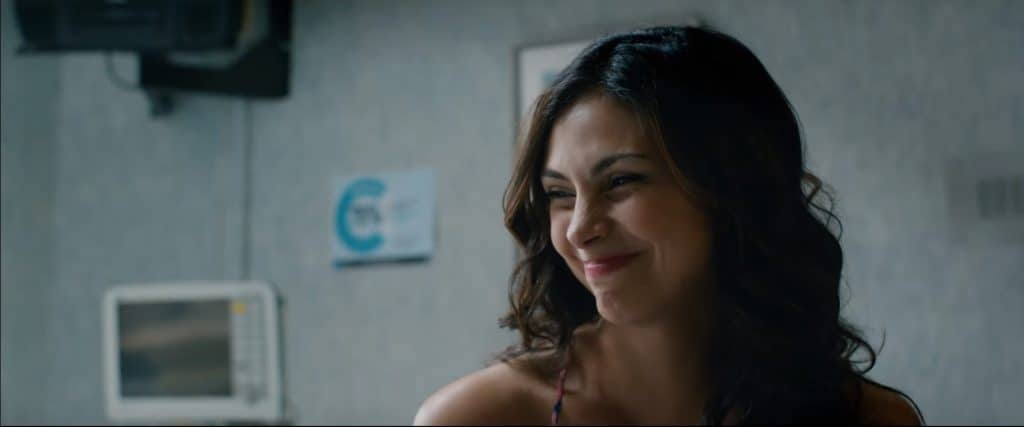
It is, however, less funny when he had to put a thumb tack in his shoe before going on a date, so that if things go too well, he can prick his toe and the pain can keep him upright. The brief but tragic scene is not so much an emotional whiplash, but a reminder to temper my glee when watching what is essentially a debilitating medical condition. All of a sudden, it was like I was walking in Charlie’s prickly shoes.
The real story that inspired director Jason Winer to make this film is, similarly, a tragicomedy. Charlie is loosely based on a real-life professor, Matt Frerking, who was interviewed in Episode 409 of the This American Life radio programme. Frerking talked about his cataplexy with a defeated tone that was both heartbreaking and rib-tickling — his sudden blackout had once resulted in him “flat on his back in a flower planter for over half an hour with his legs sticking out over the edge”. His condition has both comical and sad consequences, such as not being able to celebrate his brother’s wedding because he fainted out of happiness, but his family propped his body up so that he could be included in a family photo.
His movie self, Charlie, sums it up best: “I’m medically forbidden to have fun.”
And romantic comedies are supposed to be fun. Ode to Joy, therefore, challenges the biggest supposed-to-be of romantic relationships – the happily-ever-after. How does a man who cannot be happy love someone? And is the inability to feel joy his biggest problem, or biggest excuse?
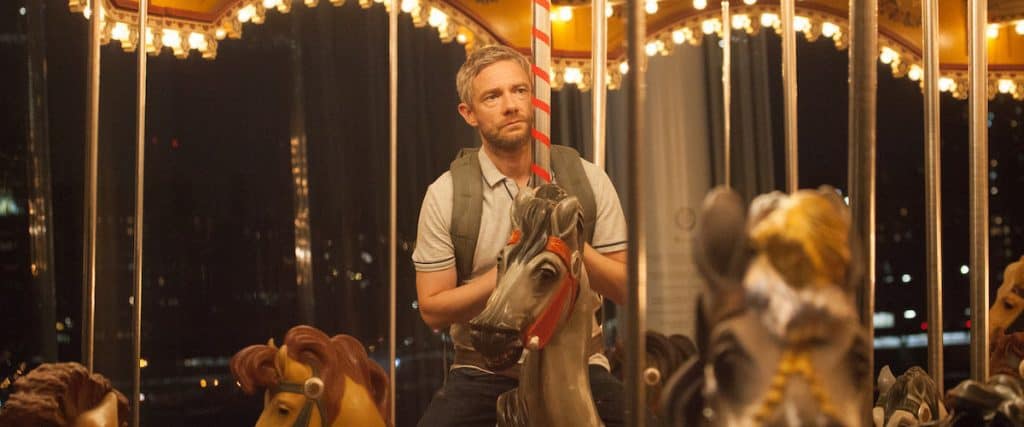
Ode to Joy is not a perfect movie. The slightly-draggy pacing makes for subdued drama, though that, to me, actually serves the narrative of the emotionally-tepid Charlie. There are also missed opportunities to develop characters who actually get a lot of screen time, which makes them feel like an interesting pieces of furniture that’s always in the background.
Yet as an off-kilter romantic comedy, Ode to Joy serves its purpose. It takes a light and breezy tone for the heavy subjects it raises (Charlie’s not the only sick person in the movie). The main protagonists are lovable. The humour landed without cluttering the plot – a few movie critics complained about the lack of hugely funny moments, but I’d argue that big laughs may not be tonally fitting for the subject matter, which deals with a real and unkind disease. It may not be an ode to mind-blowing storytelling, but joy? Sure.
Also published on Medium.

writes about pop culture with the suspicion that it is actually writing her.
